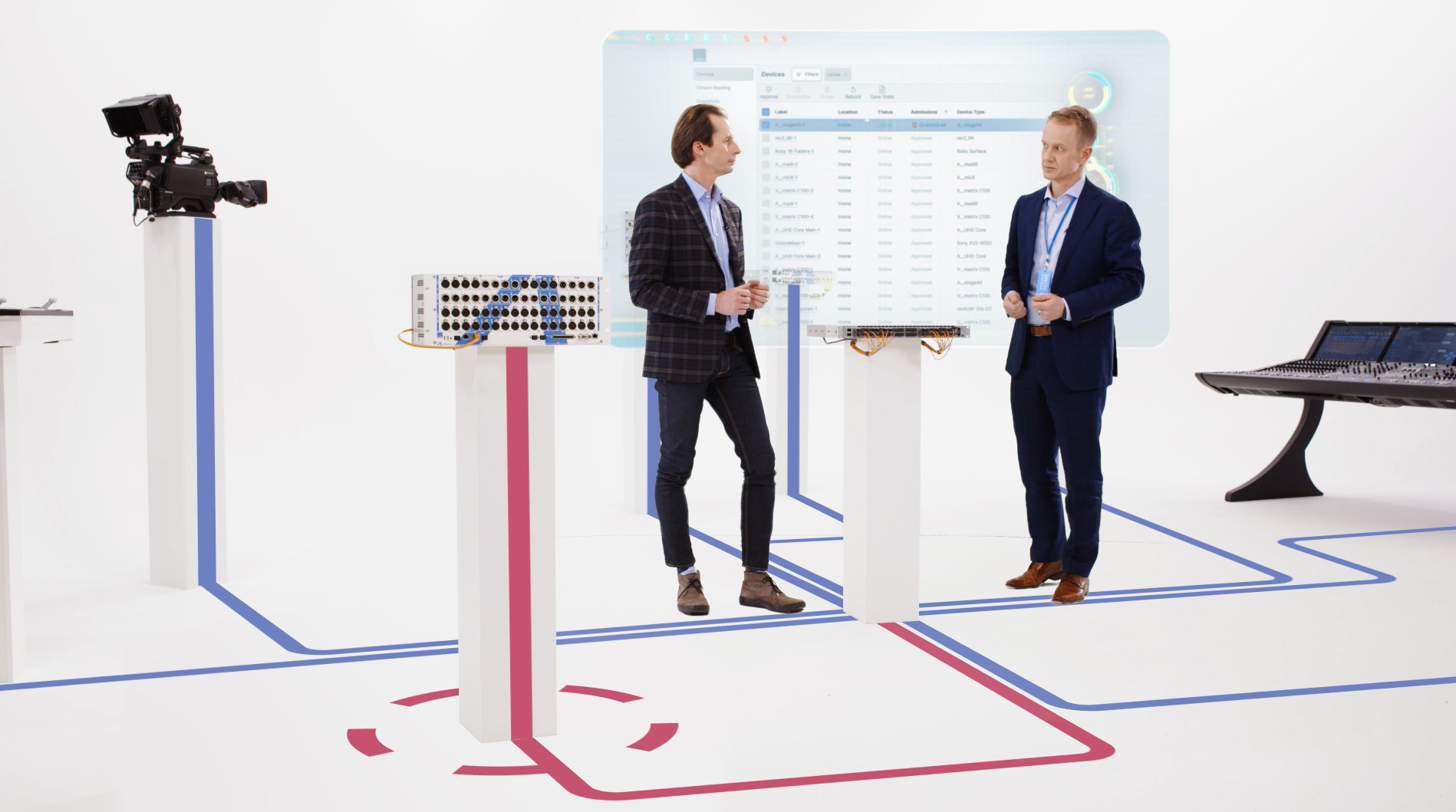Lawo launches Home management platform for broadcast audio

At a recent event, Lawo debuted Home, a new management platform for IP-based media infrastructures. Home is natively built on a cloud-ready microservices architecture, enabling users to connect, manage and secure networked production setups from the ground up.
“In today’s IP project implementations, the physical build and cabling is only half of the way. The other half consists of configuration. Home significantly increases efficiency in setting up IP system installs,” said Axel Kern of Lawo.
“Broadcasters and service providers are faced with constantly changing production demands, and setups need to adapt, no matter if on-premise or off-premise, local or remote, or even cloud. This new management platform provides the architecture for our customers to scale with their agile business requirements.”
Lawo’s Home platform is based on open standards such as ST2110, NMOS, IEEE802.1x and RADIUS and follows LUX, Lawo’s unified experience design principles, which provide a consistent workflow across all Lawo IP products.
Discovery and Registration: Home solves IP complexity with automatic plug & play discovery of IP audio and video devices, which are registered with their name, location, status and type. This applies not only to Lawo products but to third-party solutions as well via NMOS. Discovered devices are managed in a central inventory list, ready for access and configuration.
Device Management: In today’s hectic live broadcast environments, operators rely on speedy, unified device configuration routines, especially when setting generic device parameters or configuring senders and receivers. The ability to save and recall configurations is key to speed up tasks. Home provides a centralized “mission control” for these processes, providing fast and unified access to device parameters for easy tweaking, irrespective of the end point being controlled.
Operability: Home allows users to organize and access processing services. With all required facilities accessible in one place, operators can set up and change stream configurations, and route them across an infrastructure without the need for a separate controller. For large infrastructures, Home works seamlessly with a broadcast controller in the same set-up and helps to speed up configuration and operation.
Security: HOME provides a variety of security strategies, first of which is quarantining unknown devices when they come online. Only after being deliberately approved, via an intuitive IEEE802.1X-based routine, can they begin exchanging signals with the Home network.
Secondly, Home uses an authentication strategy based on a centralized user management system, with dedicated user roles and groups. The LDAP based service allows users to authenticate either locally – within Home – or via their own corporate IT infrastructure, e.g. Microsoft Active Directory. Finally comes the arbitration of devices and individual streams based on pinpointed rights management. Home’s architecture is prepared to manage services such as transport layer security, network segmentation and other IT security mechanisms such as RADIUS.
Scalable Architecture: Home is cloud-native by design, which means that its architecture is built to run detached from hardware constraints. This does not automatically mean that services must be outsourced to an external service provider whose meter is running 24/7; with HOME, the cloud starts on your campus, private and locally, on COTS hardware. The Home platform is designed as functional blocks that provide microservices, which are self-contained and supply functionality to operators or other services.
Weekly insights on the technology, production and business decisions shaping media and broadcast. Free to access. Independent coverage. Unsubscribe anytime.




Categories
Audio Mixing & Audio Consoles, Broadcast Audio, Broadcast Engineering, Broadcast Equipment, Industry Feed
The content on this page is provided by the featured companies. NewscastStudio cannot guarantee the accuracy or veracity of any claims about products or services made in this content. The views expressed in this content do not necessarily reflect the views of NewscastStudio or its team. This content may contain trademarks owned by third parties, and those marks are the property of those companies.